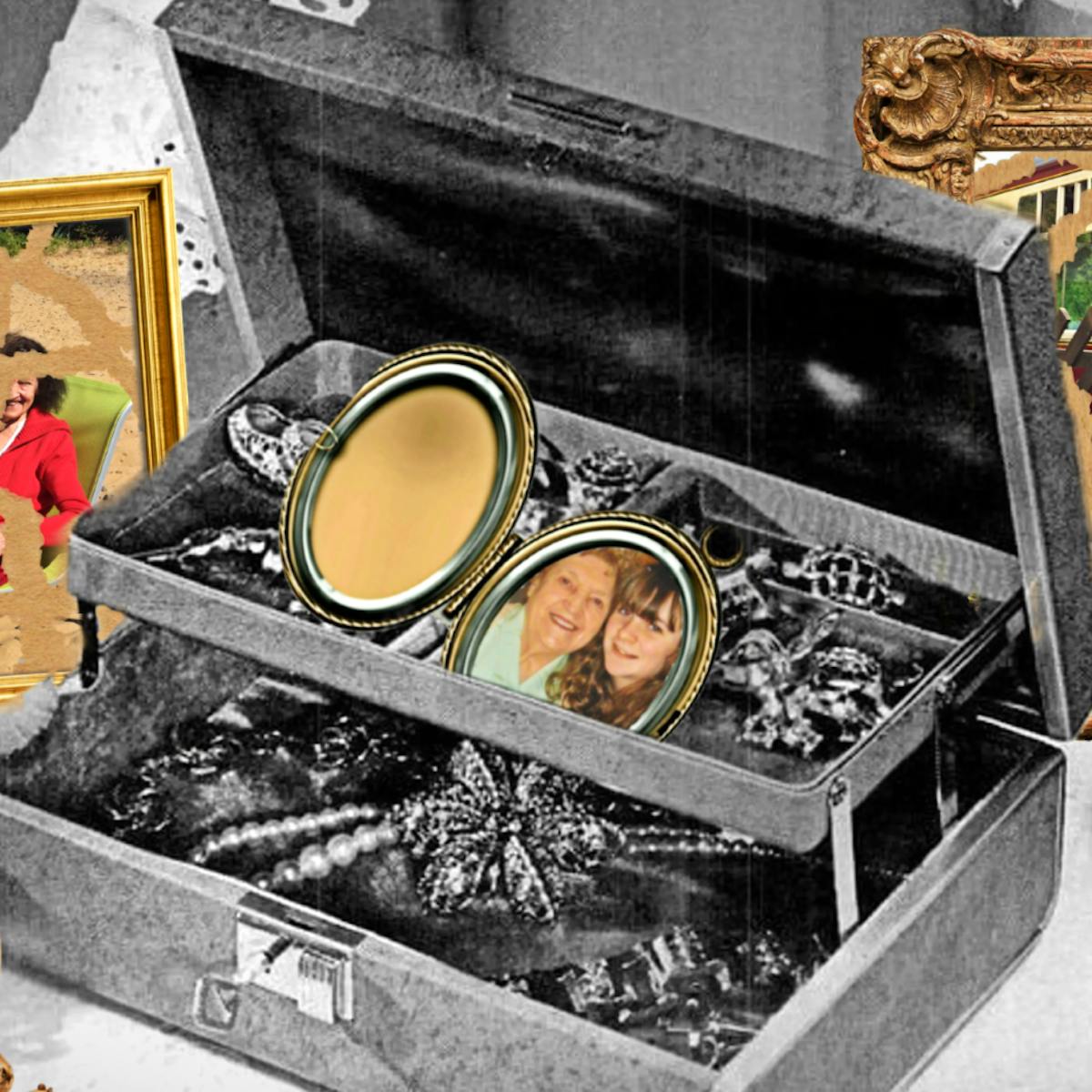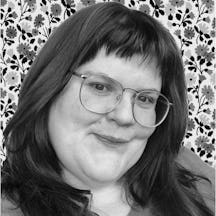For Georgie Evans and her grandma, dementia has made hoarding even more complicated. Objects took on greater significance but, as Grandma began to lose things and have falls, the stuffed bungalow became increasingly unsafe. Georgie’s feelings about Grandma’s things started to shift, and an unhappy compromise had to be reached.
I don’t remember the early days of Grandma’s dementia. I was young, and it appeared without me noticing. Once it was becoming more obvious, I forgot quickly what she was like before. It was as though she had always been that way, at any moment on the cusp of forgetting my name.
The symptoms I noticed were mostly based around talking: Grandma would lose the thread of her sentences. Our conversations were always at risk of crumbling away, the substance lost. She started to fidget more, too, and would choose to sort through her jewellery and her handbags rather than have a proper chat. Or maybe she’d forgotten we were sitting there with her.
Later, when she’d lose track of her belongings, she’d become furious with the people she thought had taken them. She started to have falls.
Those last symptoms might still have happened had she not hoarded. But it looked as though the untidiness of her bungalow was causing her to lose things and to fall.
At first, it had seemed to me that Grandma was simply buying what she’d forgotten she already had. But I wasn’t looking properly: she wouldn’t tut at herself when she arrived home and realised she already had hundreds of bars of soap. She needed them; she needed more.
Grandma knew her memory could slip, and of course she was upset about it. A slow lightening was taking place inside her head. To compensate, she made her surroundings heavy, excessive, full.

“There is safety in having a lot of belongings – just as there is danger in living around unsteady piles of things.”
Magical thinking
Hoarding behaviours are often listed as a symptom of dementia and Alzheimer’s disease. The link between the two seems logical. If you struggle to find things in your home, you’d bring them out of cupboards and drawers, into view. If you forget what you need when you go to the shops, you’ll buy a lot of things. If you’re not sure if you might need something again, you won’t throw it away. Just in case.
There is safety in having a lot of belongings – just as there is danger in living around unsteady piles of things.
As well as being physical, an object can become a kind of object-thought, standing in to represent a memory or a note-to-self.
Hoarding also makes sense as a complement to dementia because there can be a representational quality to objects, which can be helpful for someone living with it. As well as being physical, an object can become a kind of object-thought, standing in to represent a memory or a note-to-self. If, for example, a particular ornament somehow reminds you to take your tablets, you wouldn’t dare get rid of it.
It makes sense, almost as a kind of magical thinking.
At the time, though, none of this made sense to me. I didn’t realise dementia could translate so physically; I thought Grandma would just forget my name more and more until she couldn’t remember it at all.
A sense of control
It can be difficult to appreciate the necessity of the hoarded objects. When I was with her, I would watch Grandma stumble over things in her front room. When I wasn’t, I’d answer phone calls from the neighbours, telling us she’d had a fall. I began to see her stuff as the culprit, and I wanted to get rid of it.

“Clearing out a space is tricky for anyone who hoards; the thought of throwing anything away can cause great distress and anxiety.”
Clearing out a space is tricky for anyone who hoards; the thought of throwing anything away can cause great distress and anxiety. They might feel they truly need all their things.
We tried to throw some stuff away, thinking it would help. I understand now why Grandma was horrified. By trying to make her home safer, we were actually destroying the thing she most needed to control: her space.
Grandma didn’t like to talk about this; she wouldn’t explain. It must have been exhausting, the great effort of buying and bringing home and constantly sorting through things, checking she knew where they were. She worried about money very often. This collecting wasn’t a hobby – it was something she had to do.
We tried to compromise: we helped to tidy, to clear safe walkways between rooms. None of us were happy with it. We wanted no mess; Grandma wanted all of it. Everyone lost.
It did mean that I spent a lot of my childhood in the bungalow, keeping Grandma company while my mum sorted the fridge or cleaned the bathroom. In a way, I loved it. I even liked how it looked as I got older. When I got into writing – and then photography – the bungalow, rich with content, became something I turned to for inspiration.
About the contributors
Georgie Evans
Georgie Evans is a writer and bookseller from Halifax. She has an MA from Goldsmiths University and has published words in Brixton Review of Books, the Rialto, the Pomegranate, and the Telegraph. She is currently working on a hybrid non-fiction book about deafness and dementia.
Nicole Coffield
Nicole Coffield, also known as Collage Graduate, is a digital collage artist based in Northern California. Her work is composed of forgotten ads and images that are reworked to tell a new story.


